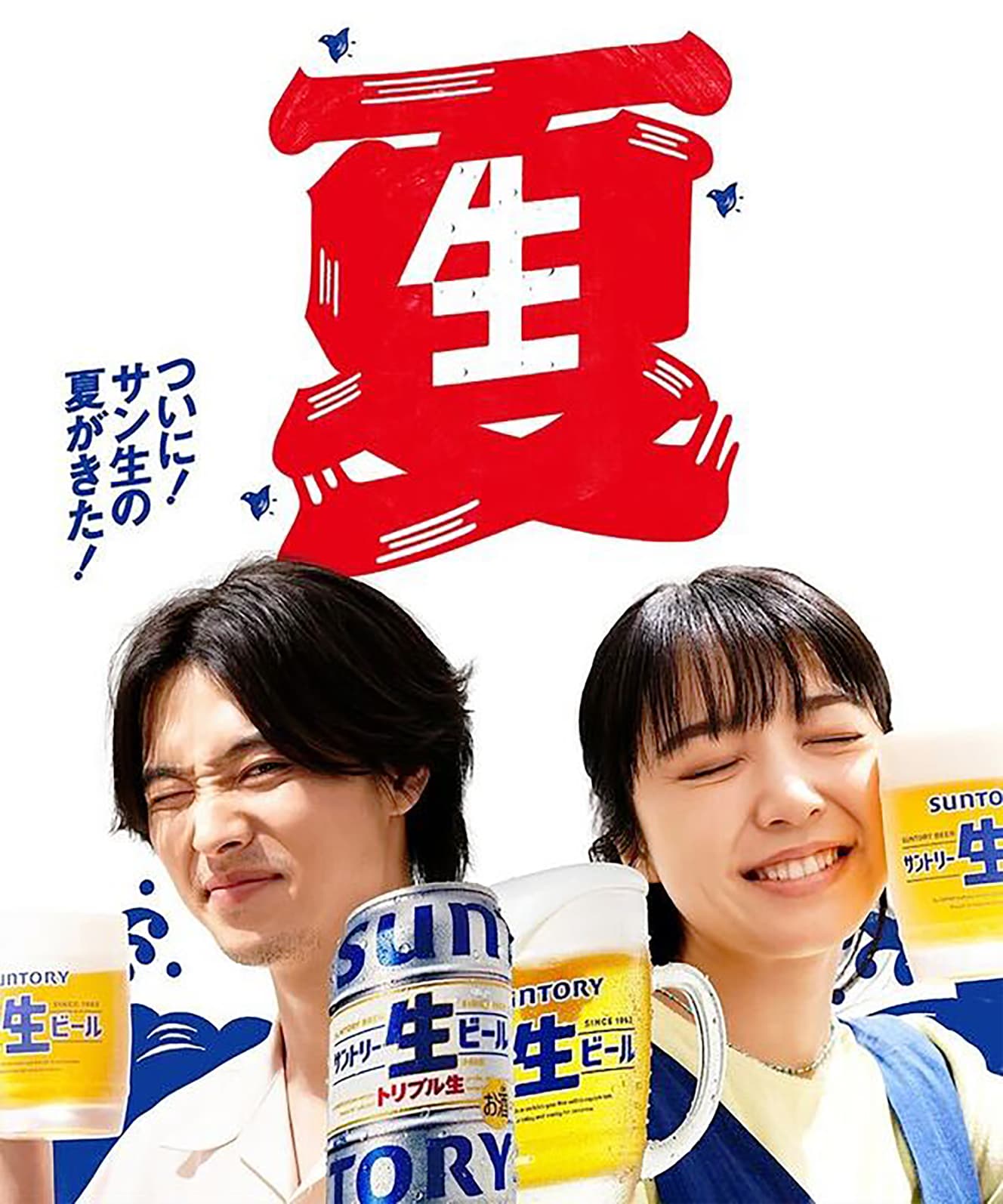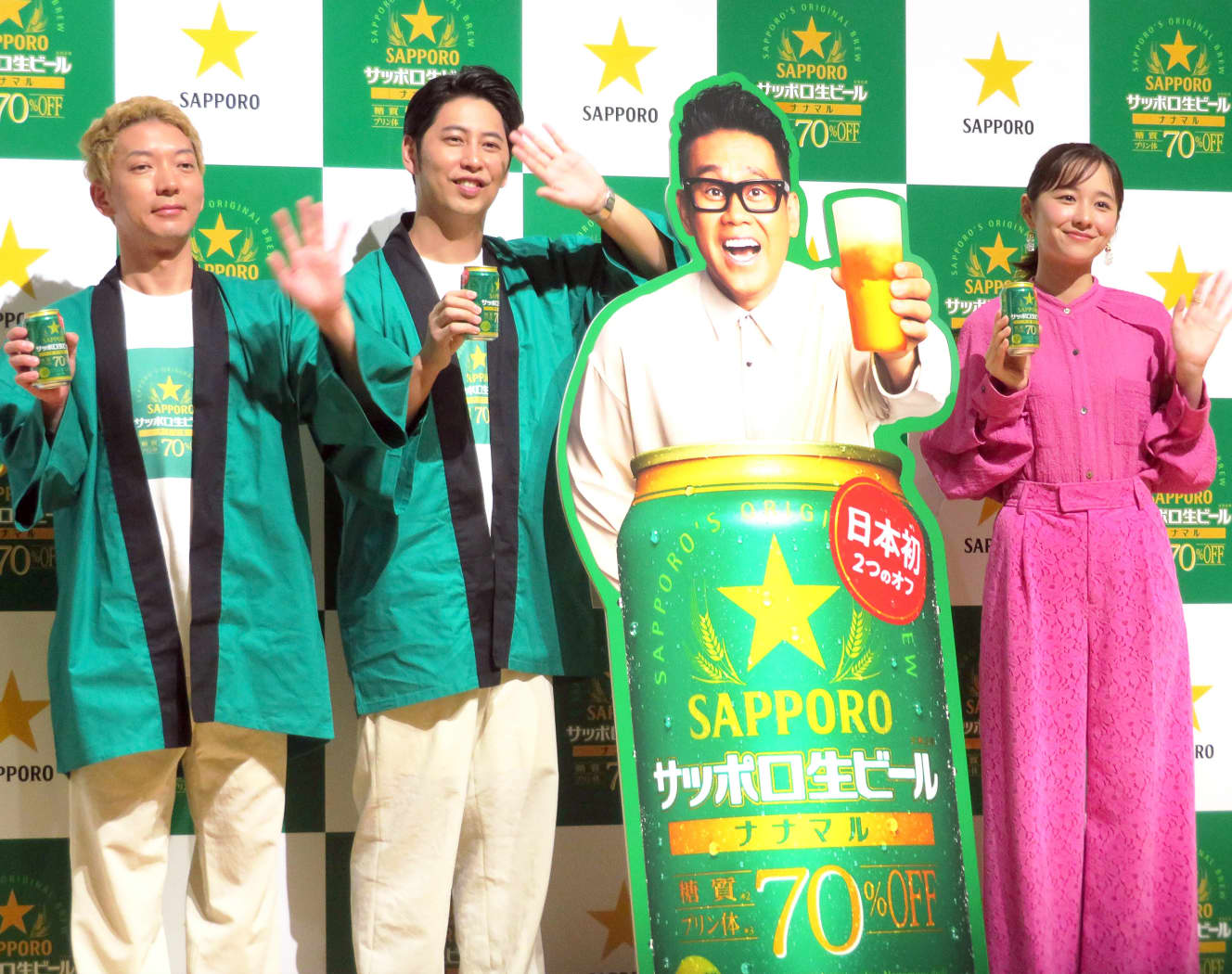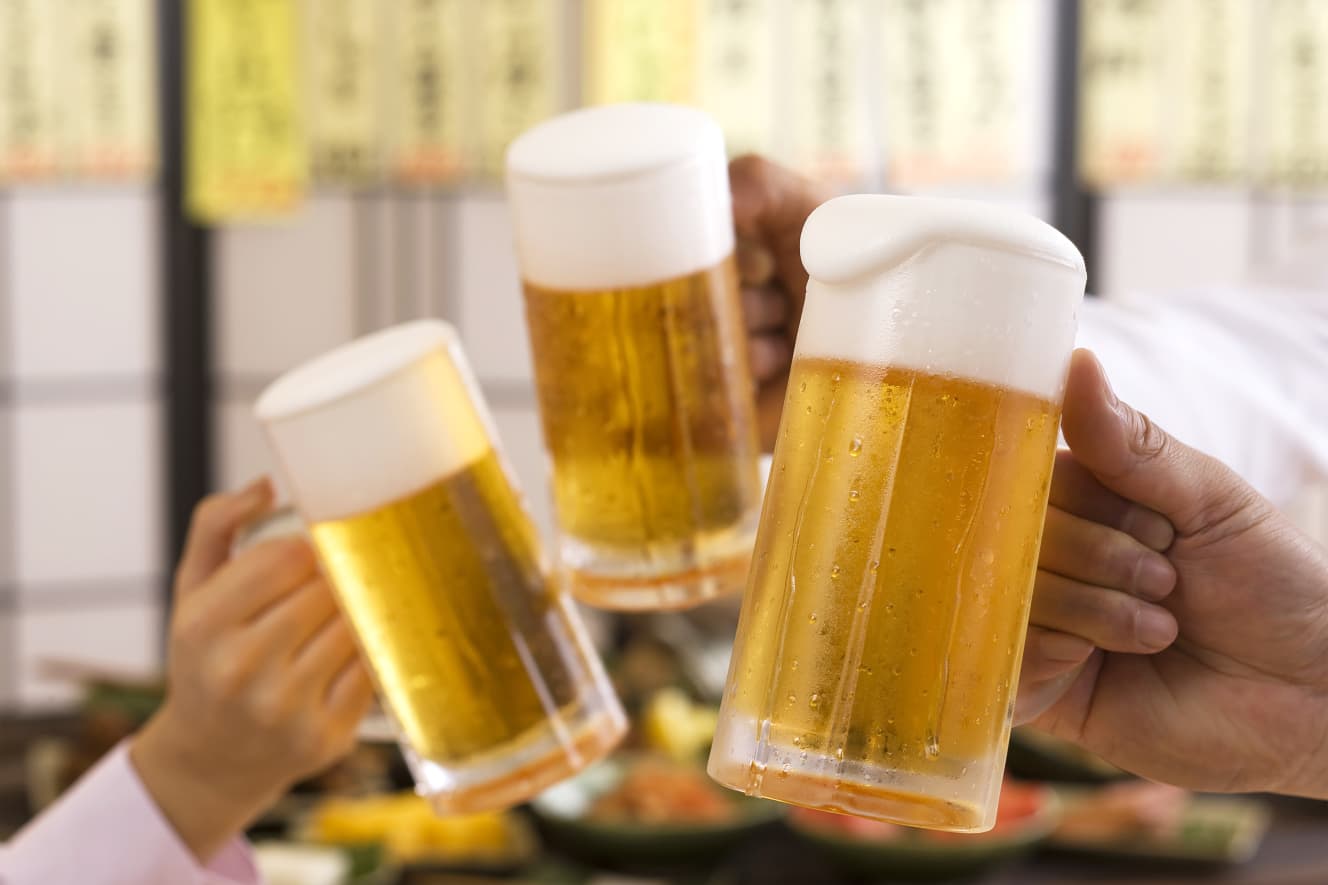New products are on the way! Rich or Dry? Dry? Summer 2024: The Great Beer War
Kirin "Harukaze" Asahi "Nama Jokkikan" Suntory "Suntory Draft Beer" Sapporo "Nanamaru
It’s hot; since the beginning of July, Tokyo has been experiencing a series of extremely hot days with temperatures topping 35°C (95°F). One evening, when a FRIDAY reporter went shopping at a supermarket near his home, he found a group of sweaty office workers on their way home from work occupying the beer shelves.
One of them, a man who appeared to be in his 40s, was staring at Kirin Beer’s “Hararekaze,” which was released in April of this year. Perhaps attracted by the pop-up featuring actress Mio Imada (27), he put three 500 ml cans in his basket and quickly went to the cash register. Three beers on a weekday evening is an extravagant evening drink, but perhaps it is an unavoidable expense to relieve fatigue from work and the heat.
The “Hararekaze” is the first new standard beer Kirin has produced in 17 years. Beer is normally characterized by the bitterness of hops, but Harukaze has a moderate bitterness that makes it smooth and easy to drink. On the other hand, it is made with 100% malted barley, which gives it a robust barley flavor, making it light yet drinkable. Young people who don’t like beer and middle-aged and older beer lovers can both enjoy drinking it,” said beer writer Hiroyuki Tomie.
The sales of Hararekaze were so strong that it broke the record for the highest sales of a new beer product Kirin has launched in the past 15 years, surpassing its annual sales target of 2 million cases in one month, more than 40% of its annual sales target. With this hit, Kirin aims to return to the No. 1 position in the industry, according to the company.
Until the mid-1990s, Kirin dominated the industry with Kirin Lager beer. Kirin Beer, the predecessor to Kirin Lager, was an extremely long-selling product that had existed since 1888, and it was a scene from the Showa period when fathers would come home, open a bottle of Kirin Beer, and watch the Giants game on TV. From 1972 to ’85, the company’s share of the industry was 60%, with a high of 63%. It was to the point where people said, ‘If we don’t do anything, we will be violating the Anti-Monopoly Law,'” said economic journalist Takai Naoyuki.
While Kirin was leading the market, Asahi Beer was struggling. In 1985, when Kirin had 60% of the market, Asahi’s share was less than 10%. Some people were even making fun of Asahi Beer as a “sunset beer,” comparing it to the setting of the sun.
Aiming for a comeback, Asahi launched “Asahi Draft Beer” (Maruef) in 1986. The nickname “Marufu” came from the fact that the internal development symbol was “F”. The following year, in March ’87, “Asahi Super Dry” was introduced to the world. MARUEF” was developed with the goal of creating a royal beer by concentrating Asahi’s technological capabilities, but “Super Dry,” its little brother, was a very different kind of beer, a “next generation beer.
In developing “Super Dry,” Asahi conducted a consumer survey of 5,000 consumers and found that young people were looking for a refreshing beer. We established the concept of ‘a beer that goes well with sashimi and tempura and can be drunk in large gulps,'” says Takai.
When it was first launched, “Super Dry” was sometimes criticized as “not a beer” because of its lightness, but in its first year, 13.5 million cases of “Super Dry” were sold. The fact that Kirin’s “Hararekaze,” introduced at the beginning of this article, targets 4.3 million cases per year should give some idea of the tremendous sales potential of “Super Dry.

Kirin Drowns in Its Own Tricks
At the time, however, the barriers to Kirin Lager were thick. Even though “Super Dry” had grown into a mega-brand, selling 120-130 million cases a year, Kirin Lager, which ranked first, had recorded 150 million cases (in 1994).
At the time, Asahi advertised “Super Dry” as the number one selling draft beer. At the time, Kirin Lager was not a draft beer because it was heat-treated in the manufacturing process. Kirin must have been annoyed by this claim, because in 1996, Kirin changed “Kirin Lager” to a draft beer without heat treatment. Of course, the taste changed, and long-time fans fell away, and in 1997, Kirin gave up the top beer brand position to Super Dry.
After 11 years on the market, “Super Dry” finally became the number one beer brand in the industry, and it continues to defend its title to this day.
In 1921, during the COVID-19 crisis, Asahi launched the “Super Dry Draft Jokki-Can. When the tab is pulled up, the top of the can is fully opened and fine bubbles are generated. The bubbles are created by using a special paint to create crater-like bumps on the inside of the can. The fact that you can enjoy a restaurant-like flavor in a can matches the recent boom in home drinking,” says Tomie.
In the three years since its launch, “Nama Jokki-Can” has sold approximately 21 million cases. The annual average of 7 million cases exceeds the sales target for Kirin’s Harukaze.
Harukaze” was designed to have a taste that is easy for young people to enjoy, while “Nama Jokki-Can” was designed to meet the demand for drinking at home. Suntory, which has dominated in the premium price range, is now working to attract new customers with its unprecedented standard price range.
Suntory’s top brand is “The Premium Malts,” launched in 2003. It has golden packaging, a dark blue tab introduced in ’23, and a fruity, rich flavor. Combined with a price that is 50 yen higher than other beers, it is perfect for a special beer to be drunk on a special occasion.
Suntory took advantage of this image and launched the standard beer “Suntory Draft Beer” in April ’23. The packaging is silver-based, and the logo with the word “Nama” written in large letters gives a sense of ruggedness. The taste is also a refreshing type that is easier to continue drinking than “Premium Malts”. It is not fashionable, but that is why it is a beer for the masses, which is what differentiates it from other beverages,” said Takahiro Ezawa, beverage expert.
Suntory Draft Beer” has been selling well, selling 3.99 million cases in the first year since its launch, 1.3 times the initial plan. Suntory, which responds to consumer needs in a variety of situations, such as “Premium Malts” on special occasions and “Suntory Draft Beer” for daily use, has seen sales volume in the beer category grow by 109% year-on-year.
Like Suntory, Sapporo Beer, with its high-priced “Evisu Beer” and standard beer “Sapporo Black Label,” has focused on the “health boom.
In October 2011, the company launched “Nanamaru,” the first draft beer in Japan to claim to be 70% free of purine and sugar. It attracted a great deal of attention because it allowed people to drink draft beer without feeling guilty. However, the product has struggled, as other companies have launched non-alcoholic beer and sugar-free beer-tasting beverages in rapid succession, and many have pointed out its unique bitterness. It is the industry’s first attempt, and I think it will become an interesting entity if the taste improves through product improvement. ……” (Reporter from a beverage trade newspaper)
Asahi Super Dry,” which has become a staple for evening drinks, was a heretic when it was first launched. In the beer industry, where new trends are sweeping the market, it may be products that are different and surprising to consumers that will take the upper hand.





From the July 26/August 2, 2024 issue of FRIDAY

